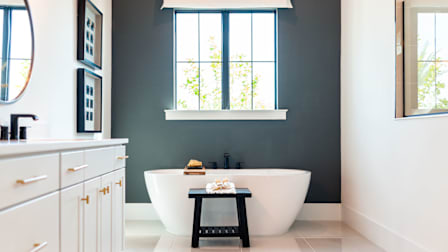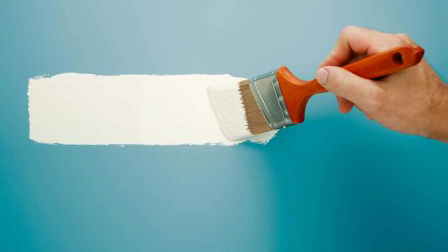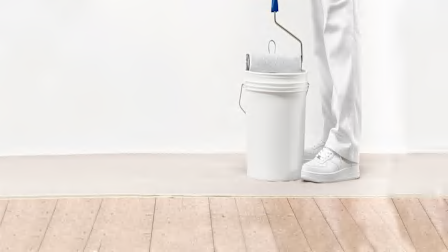Best Interior Paints
We rigorously tested paints from Benjamin Moore, Behr, and other brands for hiding and staining performance
When you shop through retailer links on our site, we may earn affiliate commissions. 100% of the fees we collect are used to support our nonprofit mission. Learn more.

When you’re faced with rows of stacked interior paint cans at Home Depot, Lowe’s, or a specialty retailer, it’s impossible to know which ones will look good right after application—not to mention just as good after several years of wear.
Choosing the wrong paint can cost you in more ways than one. The price of formulas has risen annually since 2020. The top-performing paints in CR’s tests cost $35 to $66 per gallon. If you wind up using a formula that doesn’t give you the finish you hoped for, you might not be able to get your money back. Home Depot and Lowe’s will let you exchange an opened can of paint within 30 days, while Benjamin Moore won’t let you return opened paint at all.
Then there’s your time and effort. If you pick an indoor paint that’s more prone to scuffing, fading, and staining, you’ll be painting your walls again sooner than you would hope.
Best Interior Paints
Many of the best indoor paints in our ratings are exclusive to certain retailers, such as Home Depot and Lowe’s. Although we include these retailers in parentheticals where applicable, you may also be able to find alternative formulas from the same brand at other specialized retailers.
How CR Tests Paints
The paint formulas you see in our ratings are nontinted base paints (paint before the color is added). Each base paint goes through two tests to determine how well it can cover dark colors and how well it resists stains. We’ve also started testing direct-to-consumer paint formulas in each brand’s whitest white. “CR tested three such products in 2023 and 2024, but they are not included in our ratings because they are colored paints. We cannot make a comparison with untinted base paints,” says Wang.
To evaluate how well a paint formula hides darker colors, we apply one consistent coat to cardstock that has been painted black. After that coat dries, we use a colorimeter to measure how well the paint has covered the darker shade.
For stain resistance, our testers apply paint to a plastic panel. After it dries, we apply coffee and a substance similar to soot in a strip and allow the combination to dry. We wash the painted panels, then use a colorimeter to measure the color of the paint on the rinsed areas. The closer the cleaned portions are to the original coat, the more stain-resistant the paint.
These two tests are the most crucial when it comes to longevity and ease of application. If the paint hides well, there’s no need to use a primer.
“We don’t want you to get a paint with great hiding performance that might be fantastic when you first apply the paint but then becomes a burden to live with because it constantly requires retouching,” Wang says.
All of the paints in our ratings recently underwent testing to determine performance. Because manufacturers change paint formulas often, we test yearly to make sure we’re bringing you results that match what’s currently available on store shelves.
@consumerreports 👀 See the best exterior paints based on our expert tests through the link in our bio. #paintok #exteriorpainting #labtesting
♬ original sound - Consumer Reports
































